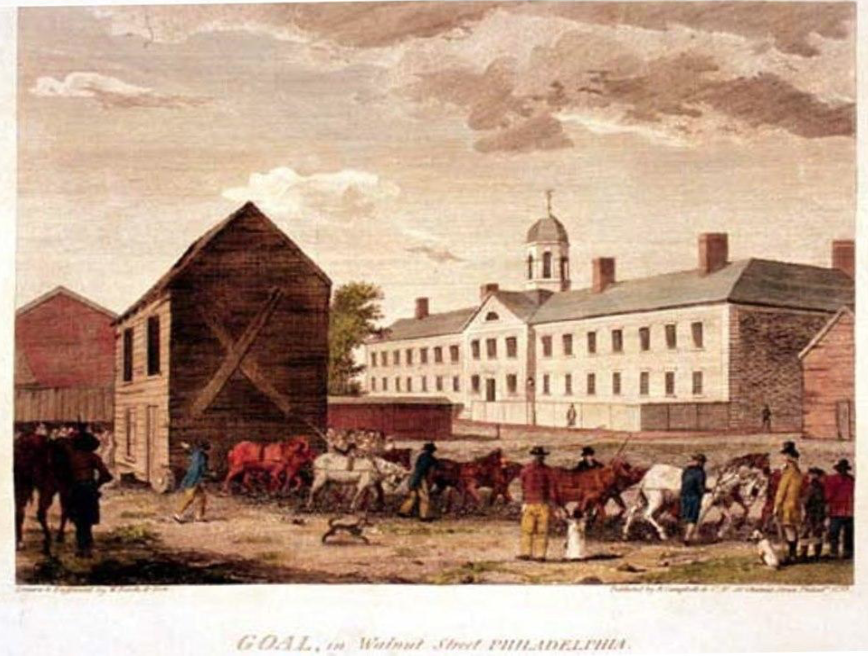8.6: A Brief History of Prisons and Jails
- Page ID
- 9654
The Growth of Jails in the United States
The concept of a jail (GOAL – old English spelling) is yet another concept that we have carried with us from Western Europe (England, etc…) when the United States was first forming. Spawning from the County-level establishment and management of jails in England, these have largely been run by County Sheriffs in the United States, ever since we began to have them. They have had various names, depending on their function and use, such as Bridewells, and Workhouses. Pictured below is what is commonly accepted as the first “built” structure to house individuals that have been processed through the courts, the Walnut Street Jail. Opening around 1790, this facility housed both jail inmates, and at some points in time convicted offenders.

Later, labeled as a prison (as depicted by the historical marker below), the Walnut Street Jail was a blueprint for later prison construction, which we discuss in the latter half of this chapter.

As the United States began to populate, county lines began to be drawn up for States earning Statehood. Sheriffs began to police their Counties, and also be responsible for managing the lower level infractions (misdemeanors) within their jurisdictions. Thus, County Jails began to flourish in the United States. Initially, many jails were nothing more than parts of a Sheriff’s office, literally, cells in the back room. Today, large structures (even multiple structures in a single county) constitute jails in the United States. Overall, we have seen changes in the growth of jails in the United States. While we were certainly growing in the number of jails as States gained Statehood, there has been a shift in jails structures. The vast majority of jails are small in size, but the smaller number of larger jails hold more individuals. As can be seen in a report from Cahalan and Parsons (1986), and reports by Harrison and Beck of the Bureau of Justice Statistics (2005), the numbers of jails has changed immensely. [1][2]
Table 2-1 Jails in the United States

This is due to a variety of reasons, to include: inclusion or exclusion of Youth Facilities, Native American Facilities, Privately Owned Facilities, and reporting structures (who reports a jail in a given year). Based on these fluctuations, it is difficult to get an exact count of jails each year. However, it appears that there are roughly 3,300 jails in the United States today.
- Cahalan, M. W., & Parsons, L. A. (1986). Historical corrections statistics in the United States, 1850-1984. U.S. Department of Justice.https://www.bjs.gov/content/pub/pdf/hcsus5084.pdf↵
- Harrison, P. M., & Beck, A. J. (2005). Prisons and jail inmates at midyear, 2005.BJS Bulletin. https://www.bjs.gov/content/pub/pdf/pjim05.pdf↵


